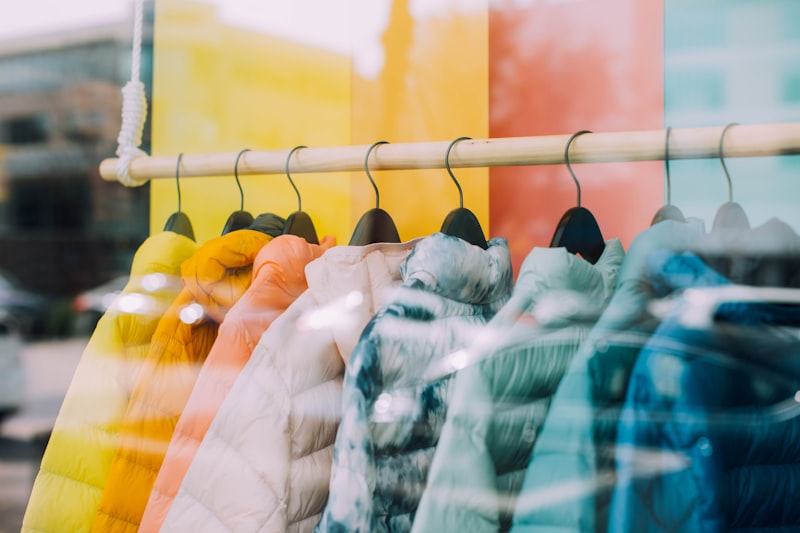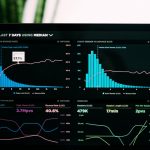One of the most exciting advancements on the horizon is augmented reality (AR). Soon, shoppers will be able to visualize how furniture fits into their homes or how clothing looks on them without ever leaving the store. AR will bridge the gap between online and offline shopping experiences, making it easier than ever to make confident purchase decisions.
Artificial intelligence (AI) is another game-changer. Imagine a store where each customer receives personalized recommendations based on their past purchases, browsing history, and even their current mood. AI algorithms will analyze data in real-time to offer suggestions that feel like they were handpicked just for you, enhancing the shopping experience and boosting customer satisfaction.
But it’s not just about enhancing the customer experience; tech is also revolutionizing inventory management and supply chain logistics. With the Internet of Things (IoT) connecting everything from shelves to delivery trucks, retailers can track inventory levels in real-time, optimize restocking processes, and minimize waste. This efficiency not only reduces costs but also ensures that customers can always find what they’re looking for.
Cybersecurity will play a crucial role in this tech-driven future. As more devices and systems become interconnected, the need to safeguard sensitive customer data becomes paramount. Retailers will invest heavily in cybersecurity measures to protect against potential breaches and ensure customer trust remains intact.
The future of tech in the retail industry is bright and full of possibilities. From augmented reality to artificial intelligence and beyond, these advancements promise to transform how we shop, interact with brands, and experience retail as a whole. As technology continues to evolve, so too will the way we engage with our favorite stores and products.
Revolutionizing Retail: How AI and Big Data Are Reshaping Customer Experiences
Imagine this: you walk into a store, and before you even utter a word, AI algorithms are analyzing your preferences based on your past purchases, browsing history, and even your social media activity. It’s like having a personal shopper who knows your taste better than you do yourself. This personalized touch isn’t just a gimmick; it’s the future of retail.
Take Amazon, for example. Their recommendation engine suggests products based on what you’ve bought before and what others with similar tastes have liked. It’s not magic—it’s Big Data crunching numbers in real-time to predict what you might want next. This predictive prowess doesn’t just benefit the customer; it helps retailers streamline their inventory and maximize sales.
But it doesn’t stop there. AI is also revolutionizing customer service. Chatbots powered by artificial intelligence can handle inquiries instantly, providing answers to common questions and even resolving issues without human intervention. This means less time waiting on hold and more time enjoying your shopping experience.
Beyond the individual shopper, AI and Big Data are reshaping the entire retail landscape. Stores are optimizing their layouts based on foot traffic patterns tracked by sensors, ensuring popular items are prominently displayed where they’ll catch the eye of passing customers. It’s like a choreographed dance where every step is designed to maximize sales and customer satisfaction.
And let’s not forget about the online experience. E-commerce giants use AI to analyze vast amounts of data to personalize websites, showing you products you’re likely to buy and tailoring promotions to your interests. It’s like having your own personal storefront, curated just for you.
From Clicks to Bricks: The Seamless Integration of Online and Offline Shopping Experiences

In today’s digital age, clicking through online stores offers unparalleled convenience. From browsing endless product options to making purchases with a simple click, the online shopping experience has revolutionized retail. But what happens when virtual transactions translate into physical visits? This is where the magic of integration begins.

Imagine finding your favorite item online and effortlessly locating it in a nearby store. The journey from clicks to bricks bridges the gap between virtual exploration and hands-on experience. Brands are increasingly leveraging technology to enhance this journey, offering features like real-time inventory updates and store locators to guide consumers from screen to store.
Moreover, the seamless integration isn’t just about convenience; it’s also about enhancing customer experience. Picture this: you browse a furniture website, select a sofa, and then visit the showroom to see it in person. You touch the fabric, feel the comfort, and make an informed decision—all because of a smooth transition from online to offline.
For businesses, this integration is a strategic advantage. It allows them to harness the power of digital marketing while maintaining a physical presence that strengthens brand loyalty. By blending the best of both worlds, retailers create a cohesive shopping experience that meets the evolving expectations of modern consumers.
The future promises even greater integration with advancements in augmented reality (AR) and virtual reality (VR). Imagine trying on clothes virtually through your smartphone or experiencing a new kitchen layout in VR before visiting the store. These innovations are redefining how consumers interact with brands, making shopping not just a transaction but an immersive journey.
Virtual Try-Ons and Augmented Reality: Redefining Consumer Interaction with Products
Have you ever imagined being able to try on clothes or see how furniture looks in your home without actually being there? Thanks to advancements in technology, virtual try-ons and augmented reality (AR) are making this a reality. These innovations are not just changing the way we shop but revolutionizing the entire consumer experience.
Imagine shopping for sunglasses online and being able to see how they look on your face from every angle, as if you were looking at yourself in a mirror. Virtual try-ons use AR technology to overlay virtual images onto real-world environments, allowing consumers to visualize products in a way that was previously only possible in physical stores.
This technology isn’t limited to just fashion. It extends to furniture shopping too. Want to see if that new couch matches your living room decor? With AR, you can place a virtual model of the couch in your actual living space through your smartphone camera, giving you a realistic preview of how it will look.
One of the most significant impacts of virtual try-ons and AR is their ability to enhance consumer confidence and satisfaction. By allowing shoppers to interact with products virtually before making a purchase, these technologies reduce uncertainty and the likelihood of returns. This not only saves time and money for consumers but also boosts trust and loyalty towards brands that offer such innovative experiences.
Moreover, virtual try-ons and AR are democratizing access to high-quality shopping experiences. Whether you’re in a bustling city or a remote town, as long as you have a smartphone or computer, you can enjoy the benefits of trying on products virtually. This accessibility is leveling the playing field for businesses and expanding their reach to a global audience.
Blockchain in Retail: Securing Transactions and Enhancing Supply Chain Transparency
Imagine a world where every transaction is secure, transparent, and immutable. That’s the promise of blockchain in retail. Unlike traditional databases that are centralized and vulnerable to hacks, blockchain operates on a decentralized ledger. This means that every transaction is recorded across a network of computers, making it nearly impossible to alter without consensus from the entire network.
Security is one of the most significant advantages of blockchain in retail. With its cryptographic techniques, blockchain secures transactions by ensuring that once a transaction is recorded, it cannot be changed retroactively. This not only protects retailers and consumers from fraud but also builds trust in the retail ecosystem.
Moreover, blockchain enhances supply chain transparency. For retailers, especially those dealing with products from multiple suppliers and manufacturers, tracing the origins and journey of products is crucial. Blockchain enables this by providing a transparent and immutable record of every transaction and movement of goods across the supply chain.
Think of blockchain as a digital passport for each product, containing information about its origin, journey through the supply chain, and even details like temperature and humidity during transportation. This level of transparency helps retailers and consumers verify the authenticity and quality of products, thus reducing counterfeiting and ensuring compliance with regulations.
Furthermore, blockchain can streamline processes like inventory management and payments. Smart contracts, a feature of blockchain, automatically execute agreements when predefined conditions are met. This can simplify payment processes between retailers and suppliers, ensuring timely payments and reducing disputes.
Robotics in Retail: Automation’s Role in Streamlining Operations and Customer Service
Have you ever wondered how that online order magically appears at your doorstep within hours of clicking “buy”? The answer lies in the fascinating world of robotics and automation, revolutionizing the way retail operates. From giant warehouses to local grocery stores, automation is becoming the backbone of efficiency and customer satisfaction.
Picture this: a bustling distribution center where robots zip around, picking items from shelves with precision that rivals a skilled human hand. This isn’t science fiction; it’s the reality of modern retail. By integrating robotics into their operations, retailers can significantly speed up order fulfillment while reducing errors to nearly zero. This means fewer backlogs, happier customers, and ultimately, higher profits.
But it’s not just about speed. Imagine walking into your favorite store and finding exactly what you need, neatly stocked and displayed. Robotics in retail extends beyond warehouses; it’s about enhancing the in-store experience too. Automated inventory systems ensure shelves are consistently stocked, helping retailers avoid the frustration of out-of-stock items and ensuring customers always find what they came for.
Moreover, robotics are stepping up in customer service. Chatbots powered by artificial intelligence greet online shoppers, answer queries, and even recommend products based on past purchases. This personalized interaction not only enhances customer satisfaction but also boosts sales by offering tailored recommendations in real-time.
In the realm of logistics, delivery drones are taking flight, promising same-day deliveries straight to your doorstep. Imagine the convenience of receiving your order minutes after clicking “confirm purchase.” It’s a game-changer for both retailers and consumers, reducing delivery times and operational costs while minimizing the environmental impact of traditional delivery methods.
Robotics in retail isn’t just about automation; it’s about transforming the entire shopping experience. From warehouses to storefronts and beyond, automation streamlines operations, enhances customer service, and drives innovation. As technology continues to evolve, the role of robotics in retail will only grow, shaping the future of how we shop and interact with brands.
Personalization at Scale: How Machine Learning Is Tailoring Shopping Experiences
Imagine stepping into a store where every aisle and every product is tailored to your preferences. Machine learning algorithms work similarly but on a digital scale. They analyze vast amounts of data—your past purchases, browsing history, even the time of day you shop—to predict what you’re likely to buy next. It’s like having a personal shopper who knows your taste inside out.
The key to this magic lies in data. Every click, scroll, and purchase leaves a digital footprint that machine learning algorithms eagerly lap up. These algorithms then sift through this data, spotting patterns and correlations that a human eye might miss. This enables them to create highly personalized recommendations that feel almost intuitive.
Take Netflix, for example. Its recommendation engine uses machine learning to suggest movies and shows based on what you’ve watched before. It’s why you find yourself binging on a series recommended just for you—it’s been handpicked by algorithms that understand your viewing habits better than you do.
In the realm of online shopping, this translates into a tailored experience from start to checkout. From personalized homepages that greet you by name to product suggestions that match your style, machine learning ensures that every interaction feels bespoke. This not only enhances user satisfaction but also boosts sales, as customers are more likely to purchase items that resonate with them personally.
Moreover, personalization at scale isn’t just about making suggestions. It’s also about optimizing the entire shopping journey. Algorithms can predict when you might need a refill of your favorite skincare product or remind you of items left in your cart, turning what could be a mundane shopping trip into a seamless and enjoyable experience.
As technology advances, so too does the sophistication of these algorithms. What started as simple recommendations based on browsing history has evolved into predictive analytics that anticipate your needs. It’s a game-changer for retailers looking to stand out in a crowded digital marketplace, offering not just products but personalized solutions that cater to individual tastes and preferences.
Frequently Asked Questions
What are the key technologies shaping the future of retail?
Discover the pivotal technologies driving the future of retail, from AI-powered analytics enhancing customer insights to augmented reality transforming virtual shopping experiences. Explore how blockchain secures supply chains, and how IoT revolutionizes inventory management and personalized marketing.
What role will augmented reality (AR) play in the retail experience?
Learn how augmented reality (AR) enhances the retail experience by overlaying digital information and virtual objects onto the physical environment, allowing customers to visualize products in real-world settings before purchase, thereby improving engagement, reducing returns, and enhancing shopping satisfaction.
How is data analytics transforming customer insights in retail?
Discover how data analytics is revolutionizing customer insights in retail, enabling businesses to uncover actionable patterns from customer behavior data. Gain valuable understanding to optimize marketing strategies, enhance customer experience, and drive sales growth.
What are the challenges and opportunities of implementing blockchain in retail?
Explore the challenges and opportunities of integrating blockchain technology within the retail sector, focusing on enhancing transparency, supply chain efficiency, and customer trust, while navigating complexities such as scalability, integration costs, and regulatory compliance.
How will AI and machine learning impact retail operations?
Discover how AI and machine learning revolutionize retail operations, enhancing personalized customer experiences, optimizing inventory management, predicting consumer trends, and automating routine tasks.


